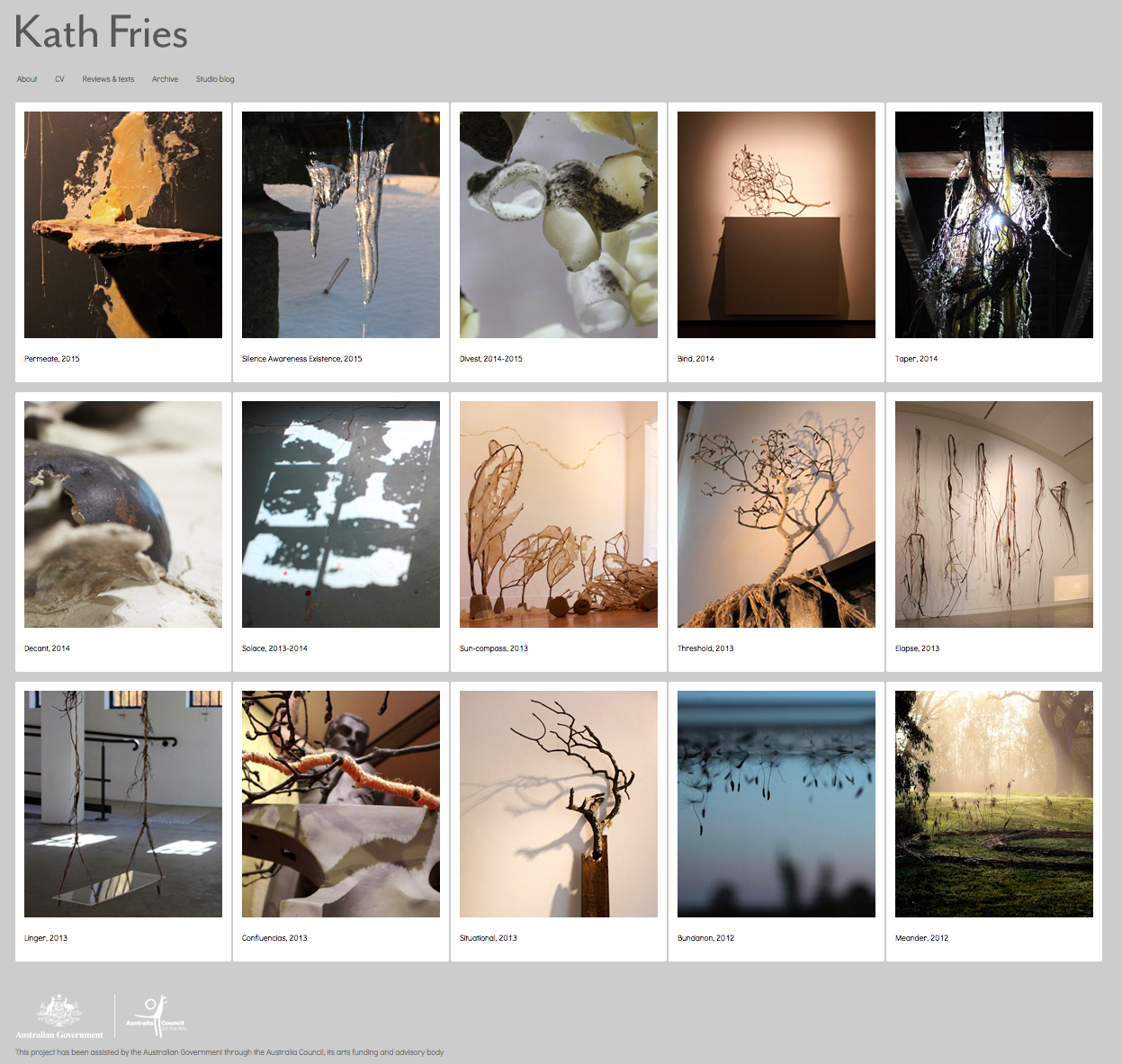 |
| Kath Fries, Sun-compass ii, 2015, stringy bark, beeswax, thread and sunlight |
ART+NATURE+SCIENCE is an exhibition of 35 artists who have participated in the Culture at Work art and science program over the past five years.
Artists: Axel Singer, Alex Wight, Carrie Ramig, Fiona Davies, Fiona Kemp, Frances Hansen, Georgina Brinkman, Georgia Saxelby, Gilbert Grace, Jayanto Damanik, Josh Wodak, Julia Kennedy-Bell, Julie Brooke, Kath Fries, Laura Jade, Lisa Sammut, Lisa Roberts, Liz Shreeve, Luke Hespanhol, Melanie Eden, Melody Lord, Meta Cohen, Rachel Park, Sherryl Ryan, Soyoun Kim and Tom Hungerford.
Culture at Work
6-8 Scott St, Prymont NSW
Opening Sat 28 Nov 3-6pm
continues to 6 Dec 2015, Thurs-Sun 11am-3pm
 |
| cultureatwork.com.au/artnaturescience-2010-2015 |
For ART+NATURE+SCIENCE, I've revisited an element of my 2013 Culture at Work Sun-compass project, which traced notions of honeybee flight, pollination and colony
communication -link. Coated in beeswax, these curled lengths of stringy bark slowly twirl around their fragile
axis, evoking cyclic notions of time. Beeswax is fragrant, malleable and fragile;
its translucency and honey aromas are intensified by changes in natural
sunlight and summer temperatures. The movement in Sun-compass ii conjures a honeybee waggle dance, communicating the direction
and distance to pollinating flowers in relation to the movement of the sun and hive
location.
Humans have been fascinated with bees and their honey since ancient times. With over 20,000 species of bees in the world, almost all human agricultural practices continue to involve keeping ‘domesticated’ bees. In ancient Greece Aristotle recorded his observations of honeybee behaviour, and Karl von Frisch is generally credited as being the first to decode the honeybee’s waggle dance. Today scientists are still learning more about honeybees’ complex behaviours, adaptations and the super-organism of the beehive. Honeybees are the second most researched species on the planet, after humans.
Humans have been fascinated with bees and their honey since ancient times. With over 20,000 species of bees in the world, almost all human agricultural practices continue to involve keeping ‘domesticated’ bees. In ancient Greece Aristotle recorded his observations of honeybee behaviour, and Karl von Frisch is generally credited as being the first to decode the honeybee’s waggle dance. Today scientists are still learning more about honeybees’ complex behaviours, adaptations and the super-organism of the beehive. Honeybees are the second most researched species on the planet, after humans.
Over the past ten years, cycles of crisis have been intensifying amongst ‘domesticated’ western honeybees globally. Termed Colony Collapse Disorder (CCD) this manifests as disorientated honeybees fail to return to their hives, they get lost as their weak immune systems cause their internal ‘sun-compasses’ to fail. Scientists believe CCD is caused by a combination of factors including habit loss from land clearing, pesticide use, genetic reduction and industrialised agriculture. The loss of honeybee colonies is already stressing worldwide human food production, as we rely on honeybees to pollinate over a third of our global food crops.
My practice and research focus on relational embodied engagements with materiality and how these encounters can be synonymous with present time experience. Working with site-responsive processes and exploring sustainability, I seek ways to connect with place through the entanglement of our senses with our surroundings. I am intrigued by the complexity, diversity and symbiosis of the ecosystems in which we live, particularly aspects which are easily overlooked or dismissed, like the vital role that bees and other insects play in pollinating flowering plants, including eucalyptus trees. Quiet observation and attentiveness are important aspects of my process, gradually revealing poetic links between humans and nature, locality and history, micro and macro, existence and mortality.
 |
| Kath Fries, Sun-compass ii, 2015, stringy bark, beeswax, thread and sunlight |





























%2BWhite%2C%2BBRANCH%2B3d.jpg)














.jpg)














